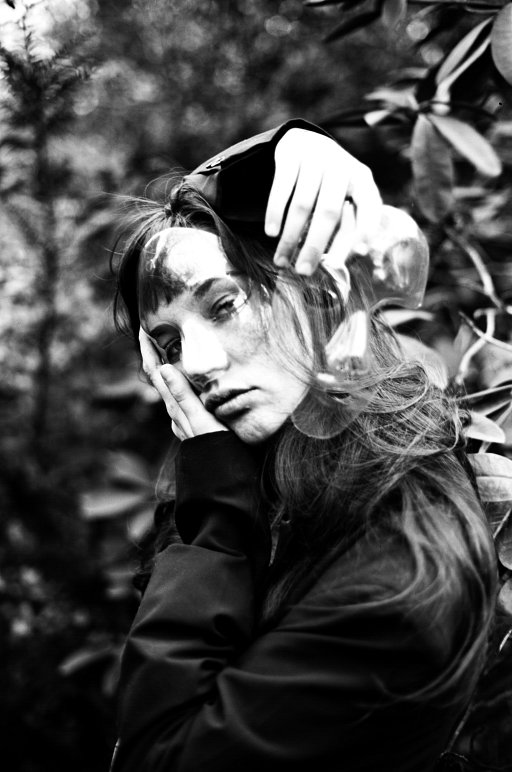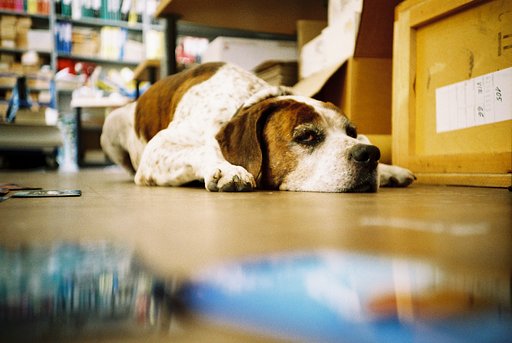First Impressions of the Fantôme Kino BW ISO 8 & Babylon Kino BW ISO 13 by Hamish Gill
8 Share TweetHamish Gill knows a lot about film photography. Based in the UK, he runs the very successful blog "35mmc" which covers everything a film photographer would want to know. We decided to sent him some early test rolls of the Fantôme Kino B&W ISO 8 and Babylon Kino B&W ISO 13 film so he could give it the full test run, from loading, shooting to processing.
Hello Hamish, did you have any previous experience shooting with slow film? What was the lowest ISO you’ve tried in the past?
Not really, probably 50 ISO Ilford Pan F, not for a long time though. 100 ISO is usually my lower limit with Ektachrome and Proimage. I’ve also recently shot and enjoyed Ilford’s new Ortho which is 80 ISO. That said, I tend to favour faster films with 400 ISO being more of an optimum. It’s actually also true that two of my favourite films are Kodak Portra 800 and Kodak P3200 too, so if pushed, I’d probably say my preference is for higher speed films generally speaking.
How was your experience shooting with the Fantôme Kino B&W ISO 8 & Babylon Kino B&W ISO 13 film?
Yeah, I really enjoyed them actually. They certainly made me think creatively, especially as someone who only shoots handheld natural light photography and is more used to higher speed film. I didn't use a tripod or any artificial light at all for my test shots, so for the Fantôme Kino B&W ISO 8 film I had to wait for a sunny day where I was pretty much limited to shooting my lens wide open at 1/60th. As someone who naturally stops down most of the time, it certainly made me think differently. Being in bright sunlight and simultaneously thinking in centimeters of depth of field when closer to a subject definitely forces a different approach. And when I say forces, that really is the word. There’s just no scope to change settings at all. Some people will find this limitation too much I’m sure, and I guess some will just use a tripod and harness the inherent lower grain. But for me, I really enjoyed the challenge of the limitation - it feeds the creativity I think.
Did you come across any challenges while shooting with our slow ISO film?
The big challenge is, of course, the limited availability of shutter speeds that can be used handheld. I shot with a Nikon F80 to do as much as possible to ensure good exposure. There were a couple of times I forgot that I couldn’t even take photos in open shade without having to watch out for the shutter speeds. One time, when trying to take a photo of a chap in the street, I did forget which resulted in quite a lot of motion blur. But as I say, the challenge is part of what will attract a lot of people to this film I think. The Fantôme Kino B&W ISO 8 film is also apparently slightly higher contrast, so with it being most usable in bright sunlight, that high contrast does create its own challenges.
Tell us a bit about the photos you’ve taken with our film.
Most of my shots were just snaps, but certainly with the Fantome Kino ISO 8 film - thinking about the fact that I was bright sunlight, and knowing I was going to be dealing with higher contrast and shallow depth of field - I did try and think about how I could take advantage of the lost shadows and highlights.
For example, in this photo, I was looking at the shadows created by the bike stands and how they created leading lines. (see photos below). I was also very keen to take advantage of buildings that would create large blocks of shade and shadow, as well as looking for subjects that were lighter colours. This shot of the swans in the flood water is a good example of that.
Finally, I also know that my lens would flare a lot wider open. Wide-open lens character is something else that can be harnessed well with these films. The shot of the side of a telephone box, was almost a shot of nothing but the angle of the light and the flare that it was causing inside my lens. With the Babylon Kino film I had it in mind that the contrast would be slightly lower. In practise, possibly because of how the films were developed, the difference wasn't as great as I expected. Nonetheless, I was less focused on the idea of just capturing contrast, so took some more conventional photos (if there is such a thing). This first one is of my daughter. I had to get her to stand in the sunshine, to get an adequate shutter speed to hand hold the camera still. The forced shallow depth of field in the sunshine gives a really nice look I think.
I’m also really pleased with this shot of some swans with the sunlight glinting off out of focus floodwater in the background. Again, this would require ND filters or very high shutter speed to achieve with a lot of other films, and again, I was really able to take advantage of shallow depth of field to create a more abstract image.
Do you prefer colored or black and white photography?
Neither, honestly, subject and mood dependent, I shoot both.
Did you have your roll of film developed in a lab or did you develop it yourself? If so, could you tell us a brief explanation of your development process (ie: which developer you used, type of agitation, how long...etc)?
Both films were developed by Duncan from SilverPan Film Lab in a Paterson Tank in fresh stock D96 with standard agitation (30sec + 1 inversion every 30sec). Duncan made the following notes:
The ISO 8 film developed at 21C for 5.5 mins
The ISO 13 film developed at 21C for 6 mins
The ISO 13 film looked a bit thin at 6 mins (including the leader area), I would probably go for 6.45 as a next test.
What could you say about the results? What are your thoughts about the film’s “look”?
I’m really pleased with my images from both films. The high contrast Fantome Kino ISO 8 film certainly brings creative possibilities and limitations that in the right hands will be harnessed well I think. The slightly lower contrast 13 ISO looks to be more versatile an option for low iso shooting. Both have a look I think I could take advantage of and I look forward to shooting them again.
Lastly, what kind of photography would you recommend our new black and white film for?
Bokehphiles could get a lot out of these films I think. If you like shallow depth of field, these films are going to be fun to shoot with. Handheld, there is just no option but to embrace those wide apertures. And of course for those used to using a tripod, depending on the reciprocity failure rates, these films might make an interesting choice for people looking to do longer exposures in brighter light without using ND filters.
Take a look at Hamish's blog 35mmc.com and Instagram page.
2020-04-20 #news #low-iso #iso8-iso-13

































Ningún Comentario